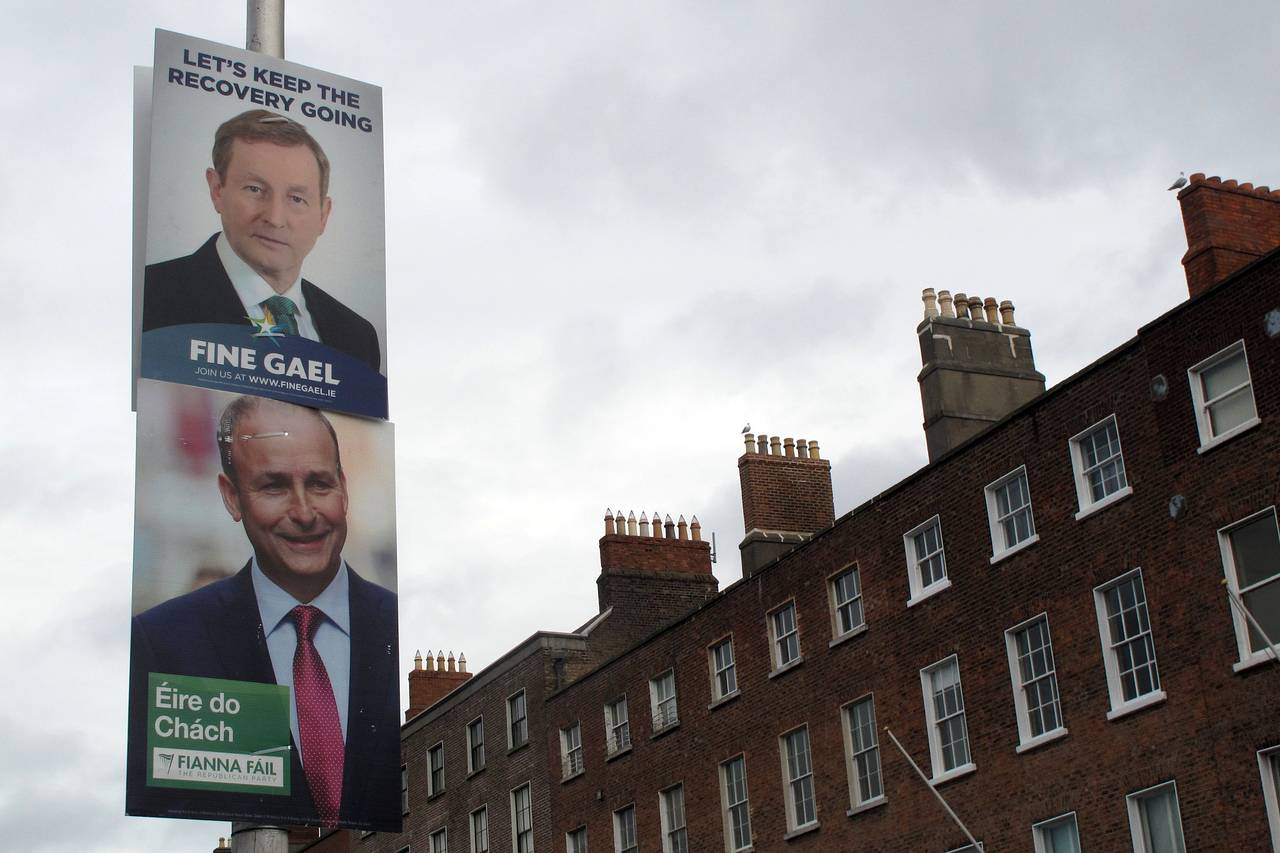Irish Exit Polls Indicate Potential Coalition Government
As vote counting continues in Ireland’s elections, exit polls suggest a potential path for the incumbent center-right parties, Fine Gael and Fianna Fáil, to form a coalition government. However, the left-wing party Sinn Féin is emerging as a significant contender, complicating the political landscape.
Exit Poll Insights
The recent Ipsos B&A poll, which surveyed 5,018 voters from across the nation, reveals a closely contested race. Fine Gael polled at 21% for first-preference votes, while Fianna Fáil received 19.5%. Sinn Féin narrowly led with 21.1%. Given a margin of error of ±1.4 percentage points, these figures underscore the tight nature of the election.
Path to Majority
For a coalition government to take shape, the center-right alliance of Fianna Fáil and Fine Gael—which previously governed together—will need additional support from smaller parties or independents. The goal is to secure the 88 seats needed for a majority in the 174-member Dáil Éireann, Ireland’s lower house of Parliament.
With vote counting still underway, political analysts project that Fianna Fáil could secure as many as 48 seats, while Fine Gael might capture 39 seats. This leaves the two parties just short of a majority, potentially extending negotiations to form a new government.
Sinn Féin’s Ascendancy
Sinn Féin’s rise continues to challenge traditional Irish politics. In the 2020 election, the party marked a historic win by topping the popular vote but was not invited into government due to Fine Gael and Fianna Fáil’s refusal to form a coalition with it. Their concerns revolved around Sinn Féin’s left-wing platform and its historical associations with the Irish Republican Army amidst Northern Ireland’s tumultuous past.
Should Sinn Féin, led by Mary Lou McDonald, emerge as the largest party in the Dáil, significant shifts in political and constitutional landscapes could ensue. The party has firmly established itself as the largest in Northern Ireland. A government run by Sinn Féin in Dublin may advocate for an Irish reunification referendum in the forthcoming years. McDonald noted the results as a breaking point from traditional political dominance, stating, “What do we do with that?” during a press conference at a vote count center in Dublin.
Coalition Challenges Ahead
Despite Sinn Féin’s momentum, establishing a viable coalition could be a formidable task. Both Fine Gael and Fianna Fáil have reiterated throughout the campaign their unwillingness to ally with Sinn Féin. More probable allies for the center-right parties include center-left factions, such as the Labour Party and the Social Democrats, each anticipated to secure up to eight seats. Additionally, the Green Party, which held 12 seats in the outgoing government, is likely to experience a decrease in support.
Context of the Election
This election comes at a pivotal time for Ireland, as the nation grapples with pressing issues such as the cost of living, a severe housing crisis, and ongoing debates surrounding immigration. These challenges dominated a three-week campaign that tested the resilience of the incumbent government amid a global trend of increasing voter dissatisfaction with long-standing administrations.
Unconventional candidates also made an impact, one of whom is Gerry “The Monk” Hutch, a reputed figure in organized crime recently released on bail from Spain. Hutch’s independent campaign in Dublin appears to resonate with local support, with early indications suggesting he may secure a seat in Parliament.
Awaiting Final Results
As counting continues, the complex proportional representation system in Ireland means final results may take longer to emerge. Political analysts postulate that the most likely outcome remains a renewal of the Fine Gael-Fianna Fáil coalition. Current Taoiseach Simon Harris from Fine Gael and Fianna Fáil leader Micheál Martin are in a competitive position to lead the next government, notwithstanding their parties’ recent lackluster popularity in the polls.
A Call for Stability
Fine Gael candidate Paschal Donohoe, serving as a minister in the outgoing administration, characterized the election as a testament to political stability. He told the Associated Press, “At a time when incumbent governments across Europe are grappling with re-election challenges, the two larger parties within this government, particularly Fine Gael, are on track to deliver a robust performance.”
Conclusion: A Transforming Landscape
While the election results hint at continuity within the center-right’s hold on power, Sinn Féin’s increasing influence alongside potential shifts in coalition dynamics highlight the evolving nature of Irish politics. This pivotal moment may carry long-term implications for both Ireland and the United Kingdom, as diverse political ideologies vie for recognition and representation in a changing political landscape.
